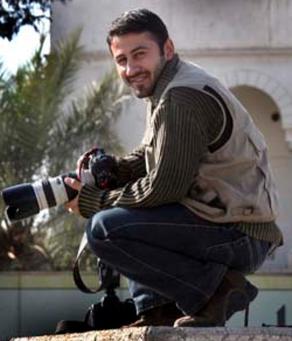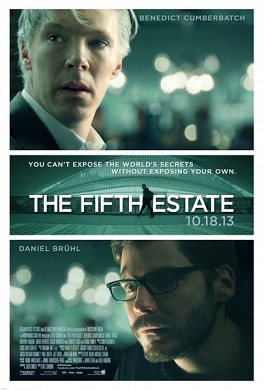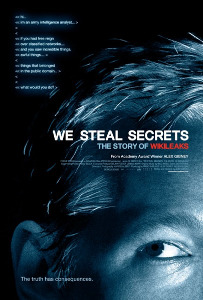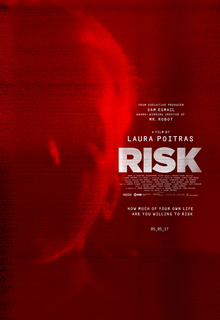3-Quinuclidinyl benzilate (QNB) is an odorless and bitter-tasting military incapacitating agent. BZ is an antagonist of muscarinic acetylcholine receptors whose structure is the ester of benzilic acid with an alcohol derived from quinuclidine.

Adam Yahiye Gadahn was an American senior operative, cultural interpreter, spokesman and media advisor for the Islamist group al-Qaeda, as well as prolific noise musician. Beginning in 2004, he appeared in a number of videos produced by al-Qaeda as "Azzam the American". Gadahn, who converted to Islam in 1995 at a California mosque, was described as "homegrown," a term used by scholars and government officials for Western citizens "picking up the sword of the idea" to commit attacks in the West. American intelligence officials allege that he inspired the 2007 Osama bin Laden video.

From 1948 to 1975, the U.S. Army Chemical Corps conducted classified human subject research at the Edgewood Arsenal facility in Maryland. The purpose was to evaluate the impact of low-dose chemical warfare agents on military personnel and to test protective clothing, pharmaceuticals, and vaccines. A small portion of these studies were directed at psychochemical warfare and grouped under the prosaic title of the "Medical Research Volunteer Program" (1956–1975). The MRVP was also driven by intelligence requirements and the need for new and more effective interrogation techniques.

WikiLeaks is a publisher and media organisation founded in 2006. It operates as a non-profit and is funded by donations and media partnerships. It has published classified documents and other media provided by anonymous sources. It was founded by Julian Assange, an Australian editor, publisher, and activist, who is currently challenging extradition to the United States over his work with WikiLeaks. Since September 2018, Kristinn Hrafnsson has served as its editor-in-chief. Its website states that it has released more than ten million documents and associated analyses. WikiLeaks' most recent publication was in 2021 and its most recent publication of original documents was in 2019. Beginning in November 2022, many of the documents could not be accessed.

Underground: Tales of Hacking, Madness and Obsession on the Electronic Frontier is a 1997 book by Suelette Dreyfus, researched by Julian Assange. It describes the exploits of a group of Australian, American, and British black hat hackers during the late 1980s and early 1990s, among them Assange himself.

Dimethylheptylpyran is a synthetic analog of THC, which was invented in 1949 during attempts to elucidate the structure of Δ9-THC, one of the active components of Cannabis. DMHP is a pale yellow, viscous oil which is insoluble in water but dissolves in alcohol or non-polar solvents.

Julian Paul Assange is an Australian editor, publisher, and activist who founded WikiLeaks in 2006. He came to wide international attention in 2010 when WikiLeaks published a series of documents supplied by US Army intelligence analyst Chelsea Manning: footage of an airstrike in Baghdad, military logs from the Afghanistan and Iraq wars, and US diplomatic cables.

Namir Noor-Eldeen was an Iraqi war photographer for Reuters. Noor-Eldeen, his assistant, Saeed Chmagh, and eight others were fired upon by U.S. military forces in the New Baghdad district of Baghdad, Iraq, during an airstrike on July 12, 2007.

On July 12, 2007, a series of air-to-ground attacks were conducted by a team of two U.S. AH-64 Apache helicopters in Al-Amin al-Thaniyah, New Baghdad, during the Iraqi insurgency which followed the invasion of Iraq. On April 5, 2010, the attacks received worldwide coverage and controversy following the release of 39 minutes of classified gunsight footage by WikiLeaks. The video, which WikiLeaks titled Collateral Murder, showed the crew firing on a group of men and killing several of them, including two Reuters journalists, and then laughing at some of the casualties, all of whom were civilians. An anonymous U.S. military official confirmed the authenticity of the footage, which provoked global discussion on the legality and morality of the attacks.
The WikiLeaks whistleblowing website founded by Julian Assange has received praise as well as criticism from the public, hacktivists, journalist organisations and government officials. The organisation has revealed human rights abuses and was the target of an alleged "cyber war". Allegations have been made that Wikileaks worked with or was exploited by the Russian government and acted in a partisan manner during the 2016 U.S. presidential election.

Incident in New Baghdad is a 2011 short documentary film about the July 12, 2007, Baghdad airstrike, directed by James Spione.

The Fifth Estate is a 2013 biographical thriller film directed by Bill Condon about the news-leaking website WikiLeaks. The film stars Benedict Cumberbatch as its editor-in-chief and founder Julian Assange and Daniel Brühl as its former spokesperson Daniel Domscheit-Berg. Anthony Mackie, David Thewlis, Alicia Vikander, Stanley Tucci, and Laura Linney are featured in supporting roles. The film's screenplay was written by Josh Singer based in-part on Domscheit-Berg's book Inside WikiLeaks: My Time with Julian Assange at the World's Most Dangerous Website (2011), as well as WikiLeaks: Inside Julian Assange's War on Secrecy (2011) by British journalists David Leigh and Luke Harding. The film's name is a reference to people who operate in the manner of journalists outside the normal constraints imposed on the mainstream media.

We Steal Secrets: The Story of WikiLeaks is a 2013 American independent documentary film about the organization established by Julian Assange, and people involved in the collection and distribution of secret information and media by whistleblowers. Directed by Alex Gibney, it covers a period of several decades, and includes background material. Gibney received his fifth nomination for Best Documentary Screenplay from the Writers Guild of America Awards for this film.
James Sanford Ketchum was a psychiatrist and U.S. Army Medical Corps officer who worked for almost a decade (1960–1969) on the U.S. military’s top secret psychochemical warfare program at the Edgewood Arsenal, Maryland, which researched chemicals to be used to "incapacitate the minds" of adversaries.

Risk is a 2016 American documentary film written and directed by Laura Poitras about the WikiLeaks founder Julian Assange. It was screened in the Directors' Fortnight section at the 2016 Cannes Film Festival. Originally titled "Asylum", the film becomes a journey into Poitras's disillusionment with Assange. In the 2016 version of the film, Poitras presents a more sympathetic position towards Assange. The 2017 re-cut version focuses more on a critique of Assange as a flawed character, including his alleged sexual assaults and his "troubling" statements about women and responses to accusations against him.

The 2016 Democratic National Committee email leak is a collection of Democratic National Committee (DNC) emails stolen by one or more hackers operating under the pseudonym "Guccifer 2.0" who are alleged to be Russian intelligence agency hackers, according to indictments carried out by the Mueller investigation. These emails were subsequently leaked by DCLeaks in June and July 2016 and by WikiLeaks on July 22, 2016, just before the 2016 Democratic National Convention. This collection included 19,252 emails and 8,034 attachments from the DNC, the governing body of the United States' Democratic Party. The leak includes emails from seven key DNC staff members, and date from January 2015 to May 2016. On November 6, 2016, WikiLeaks released a second batch of DNC emails, adding 8,263 emails to its collection. The emails and documents showed that the Democratic Party's national committee favored Clinton over her rival Bernie Sanders in the primaries. These releases caused significant harm to the Clinton campaign, and have been cited as a potential contributing factor to her loss in the general election against Donald Trump.

Vault 7 is a series of documents that WikiLeaks began to publish on 7 March 2017, detailing the activities and capabilities of the United States Central Intelligence Agency (CIA) to perform electronic surveillance and cyber warfare. The files, dating from 2013 to 2016, include details on the agency's software capabilities, such as the ability to compromise cars, smart TVs, web browsers, and the operating systems of most smartphones, as well as other operating systems such as Microsoft Windows, macOS, and Linux. A CIA internal audit identified 91 malware tools out of more than 500 tools in use in 2016 being compromised by the release. The tools were developed by the Operations Support Branch of the C.I.A.

Emma Best is an American investigative reporter who gained national attention with their work for WikiLeaks and activist Julian Assange. Best is known for prolific filing of Freedom of Information Act (FOIA) requests on behalf of MuckRock and co-founding the whistleblower site Distributed Denial of Secrets (DDoSecrets) which resulted in Best being investigated by the Department of Homeland Security and temporarily banned from filing FOIA requests.












